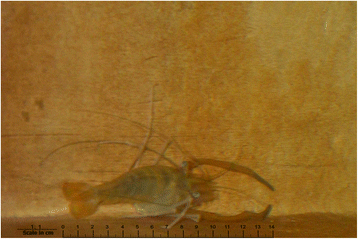"Where we put little fish in the water there are no mosquitoes:" a cross-sectional study on biological control of the Aedes aegypti vector in 90 coastal-region communities of Guerrero, Mexico
- PMID: 28699557
- PMCID: PMC5506569
- DOI: 10.1186/s12889-017-4302-z
"Where we put little fish in the water there are no mosquitoes:" a cross-sectional study on biological control of the Aedes aegypti vector in 90 coastal-region communities of Guerrero, Mexico
Abstract
Background: In the Mexican state of Guerrero, some households place fish in water storage containers to prevent the development of mosquito larvae. Studies have shown that larvivorous fish reduce larva count in household water containers, but there is a lack of evidence about whether the use of fish is associated with a reduction in dengue virus infection. We used data from the follow up survey of the Camino Verde cluster randomised controlled trial of community mobilisation to reduce dengue risk to study this association.
Methods: The survey in 2012, among 90 clusters in the three coastal regions of Guerrero State, included a questionnaire to 10,864 households about socio-demographic factors and self-reported cases of dengue illness in the previous year. Paired saliva samples provided serological evidence of recent dengue infection among 4856 children aged 3-9 years. An entomological survey in the same households looked for larvae and pupae of Aedes aegypti and recorded presence of fish and temephos in water containers. We examined associations with the two outcomes of recent dengue infection and reported dengue illness in bivariate analysis and then multivariate analysis using generalized linear mixed modelling.
Results: Some 17% (1730/10,111) of households had fish in their water containers. The presence of fish was associated with lower levels of recent dengue virus infection in children aged 3-9 years (OR 0.64; 95% CI 0.45-0.91), as was living in a rural area (OR 0.57; 95% CI 0.45-0.71), and being aged 3-5 years (OR 0.65; 95% CI 0.51-0.83). Factors associated with lower likelihood of self-reported dengue illness were: the presence of fish (OR 0.79; 95% CI 0.64-0.97), and living in a rural area (OR 0.74; 95% CI 0.65-0.84). Factors associated with higher likelihood of self-reported dengue illness were: higher education level of the household head (OR 1.28; 95% CI 1.07-1.52), living in a household with five people or less (OR 1.33; 95% CI 1.16-1.52) and household use of insecticide anti-mosquito products (OR 1.68; 95% CI 1.47-1.92).
Conclusions: Our study suggests that fish in water containers may reduce the risk of dengue virus infection and dengue illness. This could be a useful part of interventions to control the Aedes aegypti vector.
Keywords: Aedes aegypti; Dengue; Fish-based control; Larvivorous; Pupa productivity; Recent dengue virus infection.
Figures
Similar articles
-
Aedes aegypti breeding ecology in Guerrero: cross-sectional study of mosquito breeding sites from the baseline for the Camino Verde trial in Mexico.BMC Public Health. 2017 May 30;17(Suppl 1):450. doi: 10.1186/s12889-017-4293-9. BMC Public Health. 2017. PMID: 28699559 Free PMC article. Clinical Trial.
-
Coverage and beliefs about temephos application for control of dengue vectors and impact of a community-based prevention intervention: secondary analysis from the Camino Verde trial in Mexico.BMC Public Health. 2017 May 30;17(Suppl 1):426. doi: 10.1186/s12889-017-4297-5. BMC Public Health. 2017. PMID: 28699554 Free PMC article. Clinical Trial.
-
Informed community mobilization for dengue prevention in households with and without a regular water supply: Secondary analysis from the Camino Verde trial in Nicaragua.BMC Public Health. 2017 May 30;17(Suppl 1):395. doi: 10.1186/s12889-017-4295-7. BMC Public Health. 2017. PMID: 28699544 Free PMC article. Clinical Trial.
-
Interventions for the control of Aedes aegypti in Latin America and the Caribbean: systematic review and meta-analysis.Trop Med Int Health. 2019 May;24(5):530-552. doi: 10.1111/tmi.13217. Epub 2019 Mar 11. Trop Med Int Health. 2019. PMID: 30771267
-
Community involvement in the control of Aedes aegypti.Acta Trop. 1996 Apr;61(2):169-79. doi: 10.1016/0001-706x(95)00103-l. Acta Trop. 1996. PMID: 8740894 Review.
Cited by
-
When communities are really in control: ethical issues surrounding community mobilisation for dengue prevention in Mexico and Nicaragua.BMC Public Health. 2017 May 30;17(Suppl 1):410. doi: 10.1186/s12889-017-4305-9. BMC Public Health. 2017. PMID: 28699548 Free PMC article. Clinical Trial.
-
Beyond efficacy in water containers: Temephos and household entomological indices in six studies between 2005 and 2013 in Managua, Nicaragua.BMC Public Health. 2017 May 30;17(Suppl 1):434. doi: 10.1186/s12889-017-4296-6. BMC Public Health. 2017. PMID: 28699558 Free PMC article. Clinical Trial.
-
Randomised controlled trials and changing public health practice.BMC Public Health. 2017 May 30;17(Suppl 1):409. doi: 10.1186/s12889-017-4287-7. BMC Public Health. 2017. PMID: 28699541 Free PMC article.
-
Community-led trials: Intervention co-design in a cluster randomised controlled trial.BMC Public Health. 2017 May 30;17(Suppl 1):397. doi: 10.1186/s12889-017-4288-6. BMC Public Health. 2017. PMID: 28699556 Free PMC article. Clinical Trial.
-
Mobilising communities for Aedes aegypti control: the SEPA approach.BMC Public Health. 2017 May 30;17(Suppl 1):403. doi: 10.1186/s12889-017-4298-4. BMC Public Health. 2017. PMID: 28699561 Free PMC article. Clinical Trial.
References
-
- Secretaría de Salud. Centro Nacional de Vigilancia Epidemiológica y Control de Enfermedades. Panorama Epidemiológico del dengue y dengue hemorrágico en entidades federativas hasta la semana 52 del año 2015. Información disponible en: http://www.epidemiologia.salud.gob.mx/anuario/html/anuarios.html. Accessed 28 Apr 2017.
-
- Instituto Nacional de Estadística y Geografía. http://www.inegi.org.mx/est/contenidos/espanol/sistemas/aee12/estatal/GR.... Accessed 28 Apr 2017.
Publication types
MeSH terms
Substances
LinkOut - more resources
Full Text Sources
Other Literature Sources
Medical





